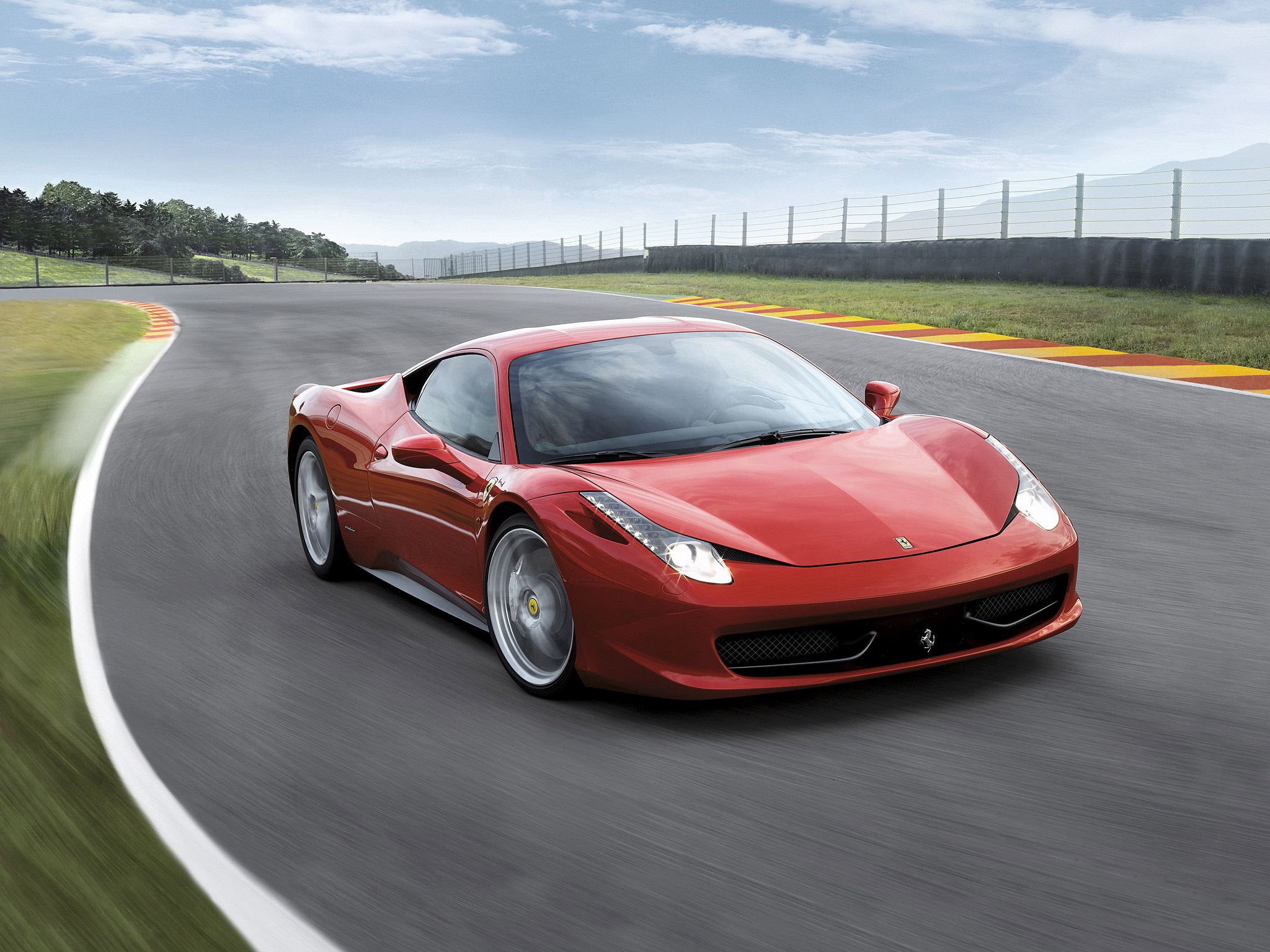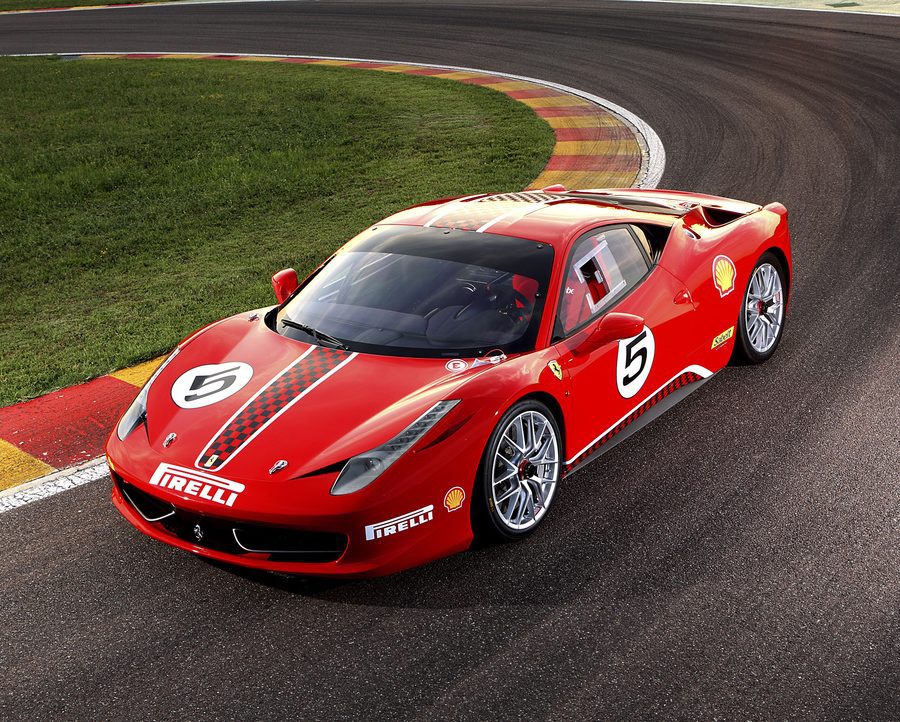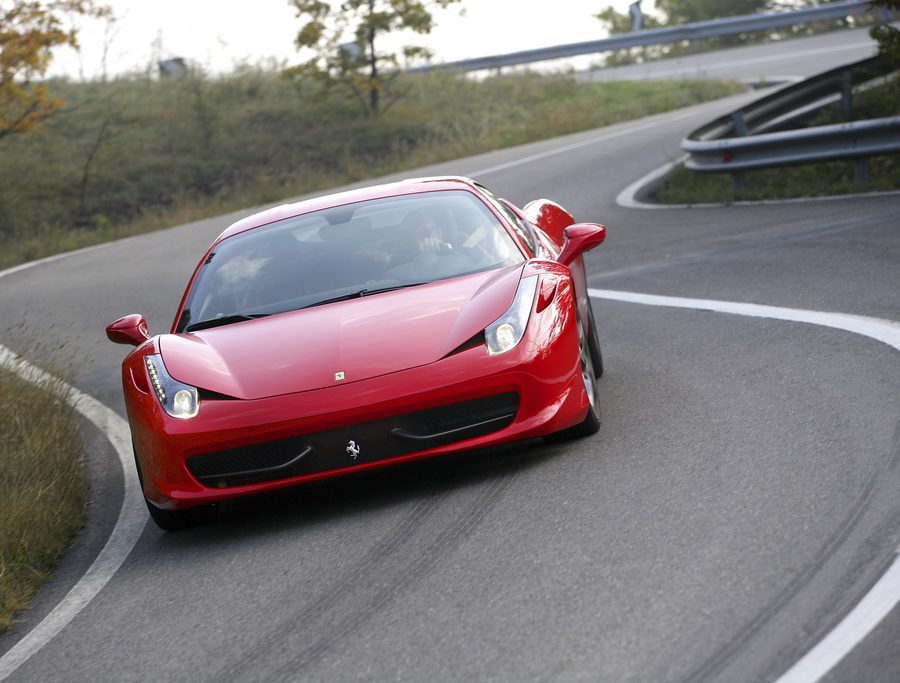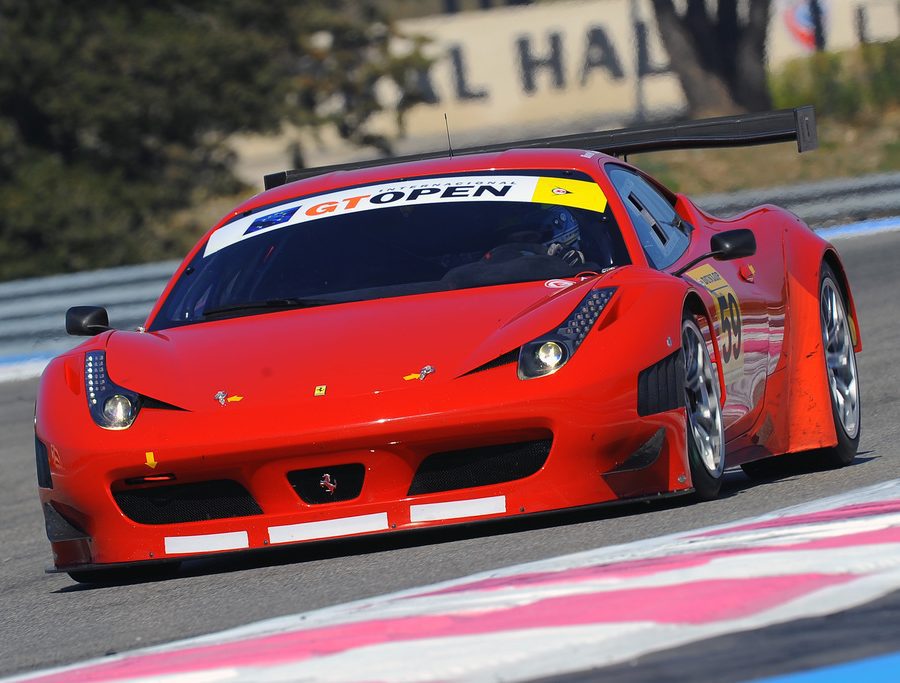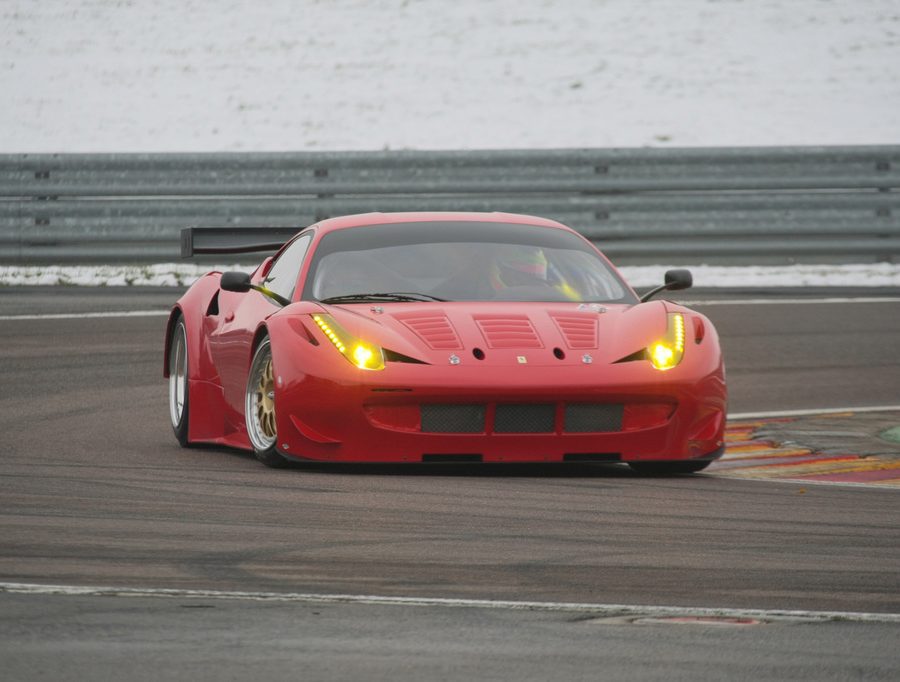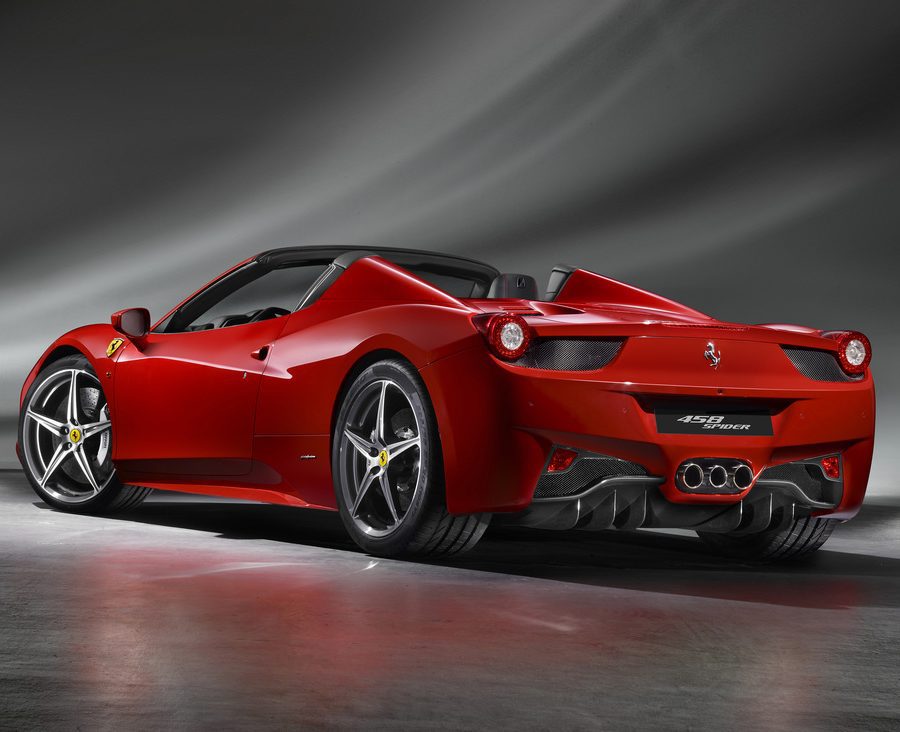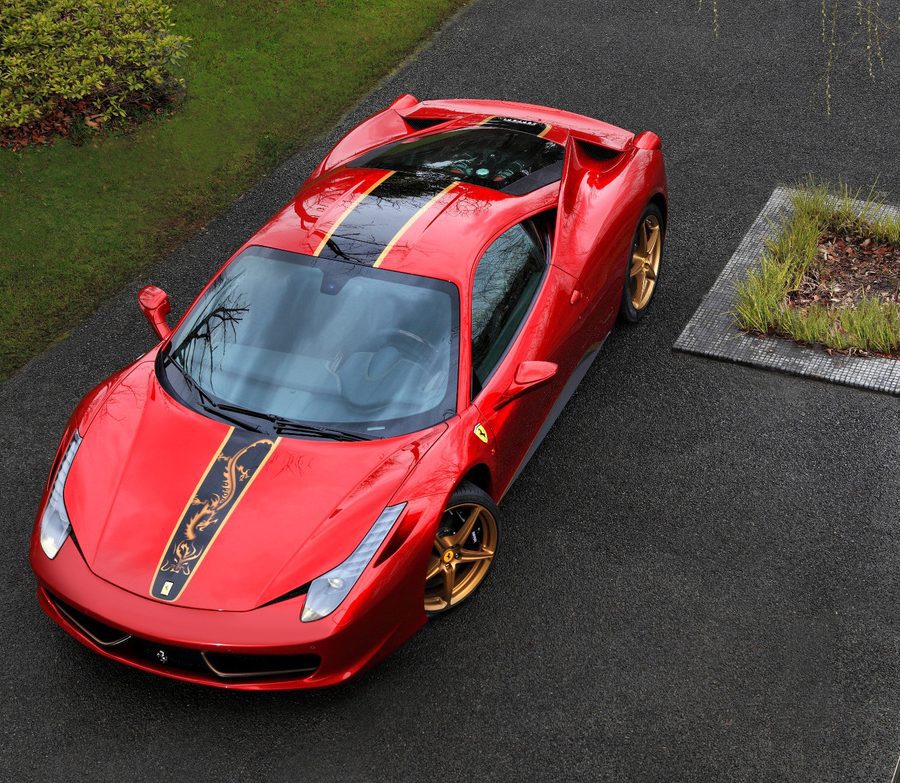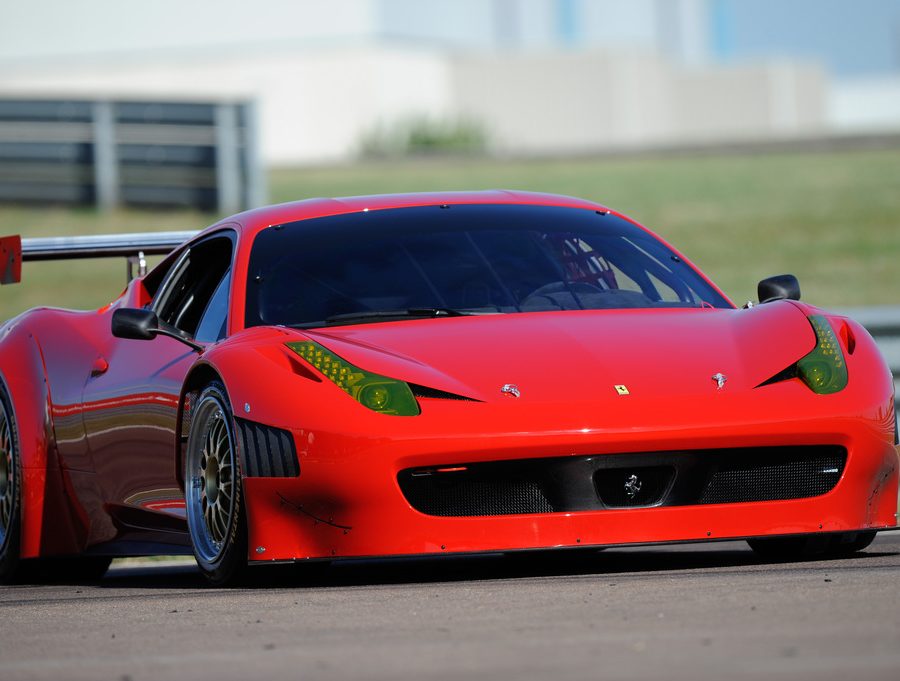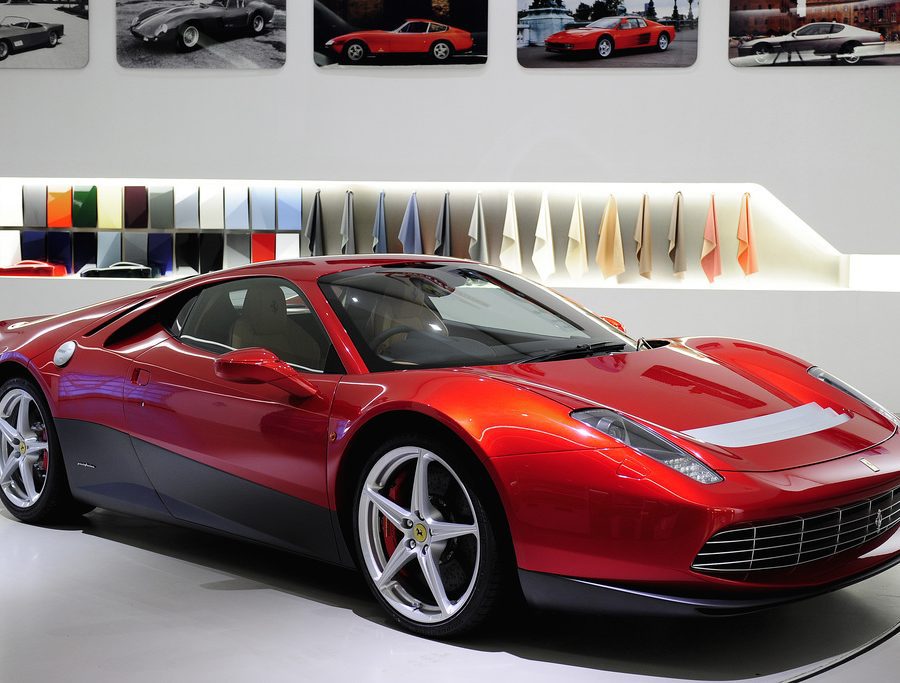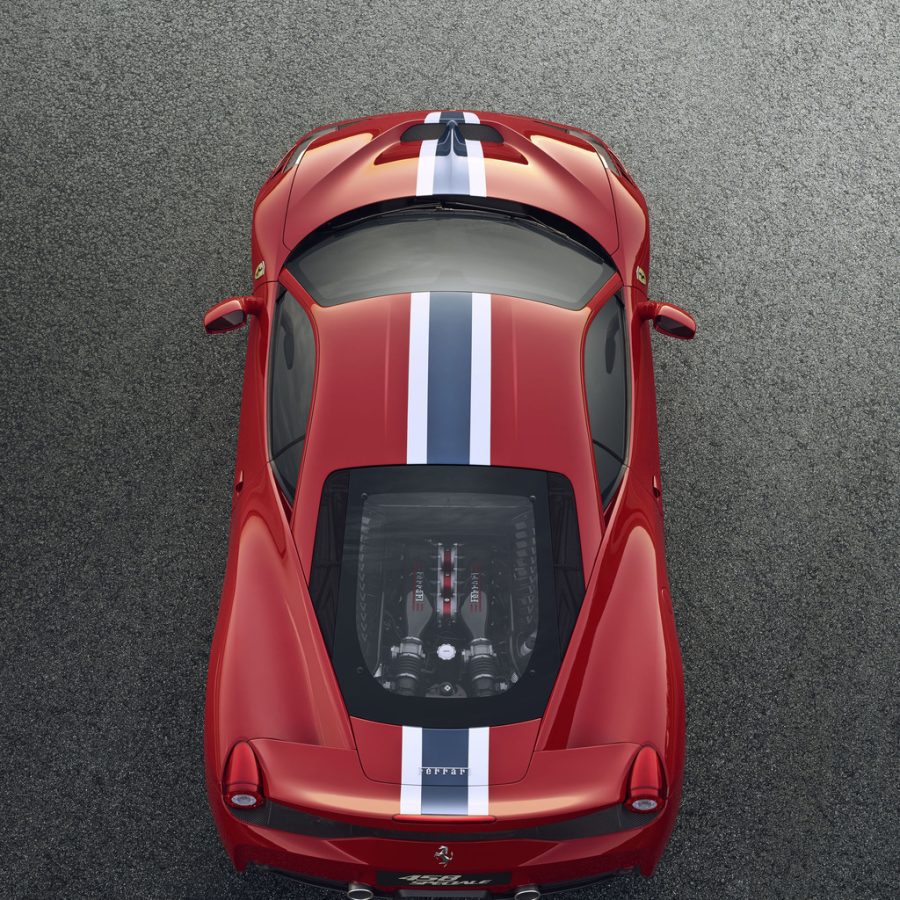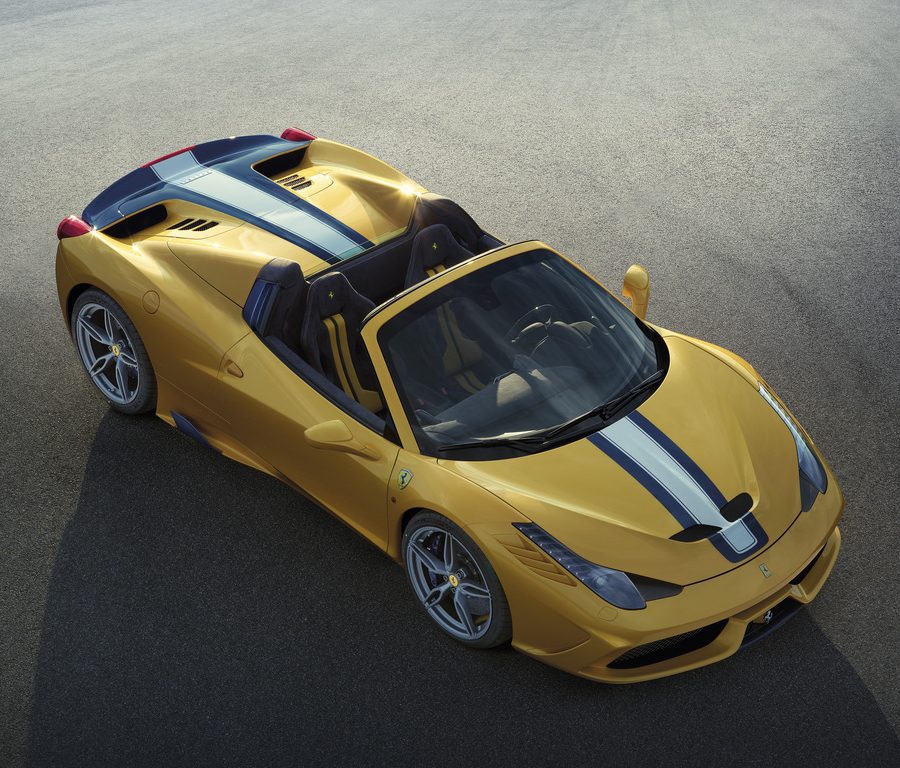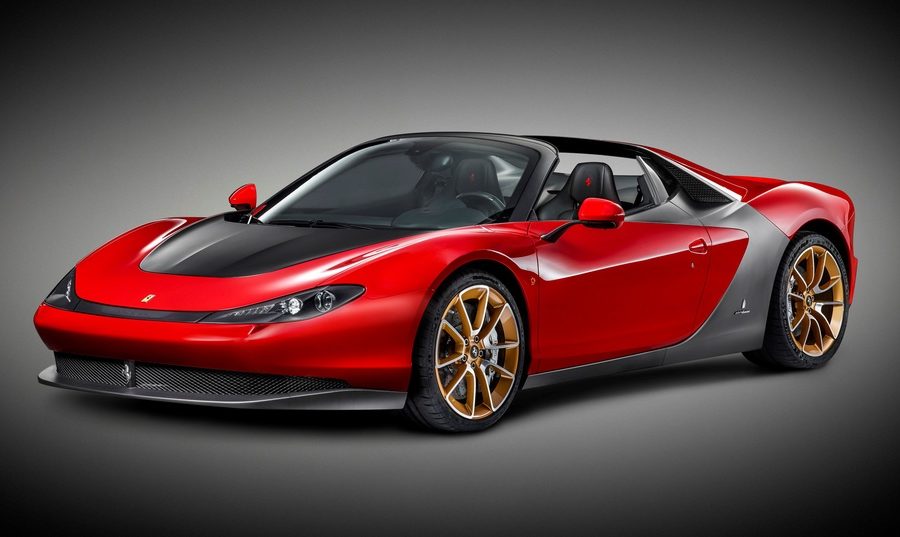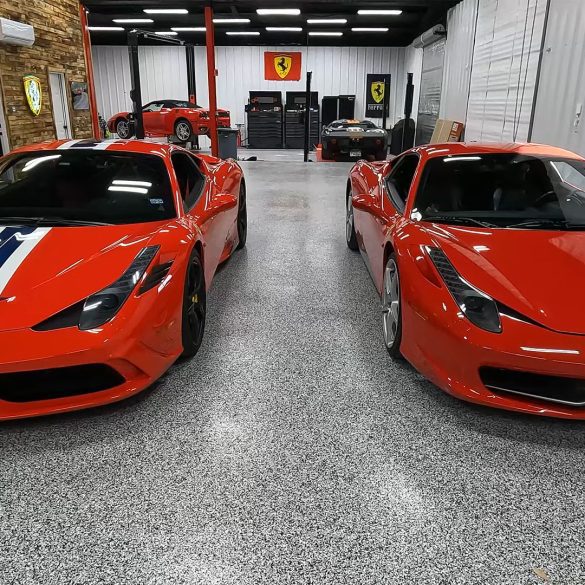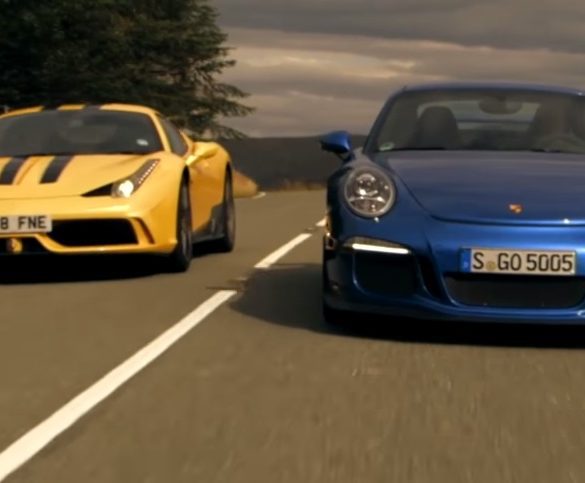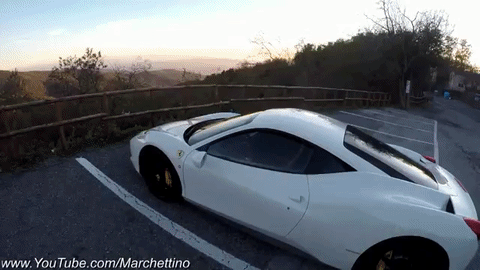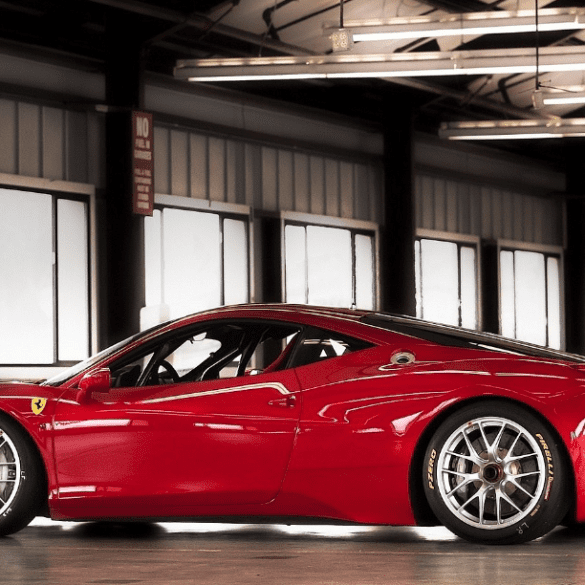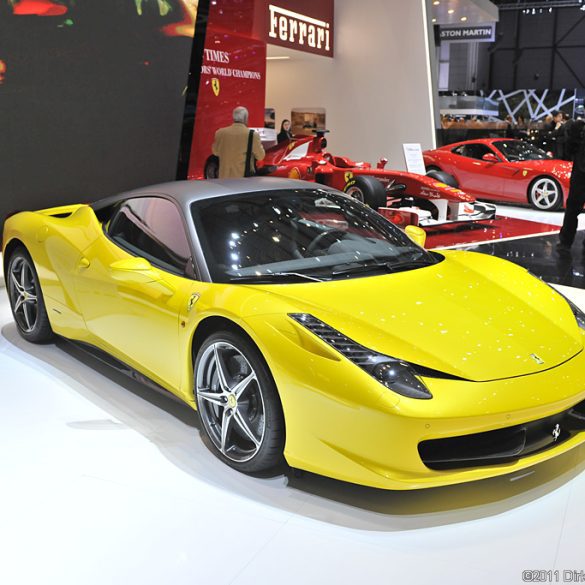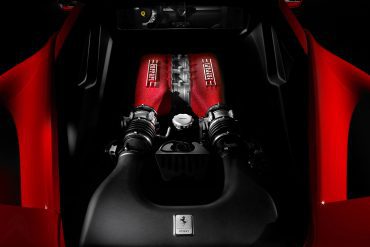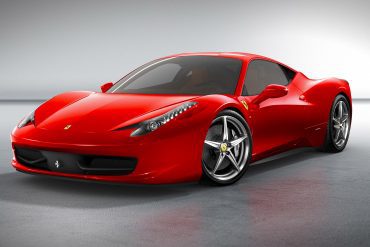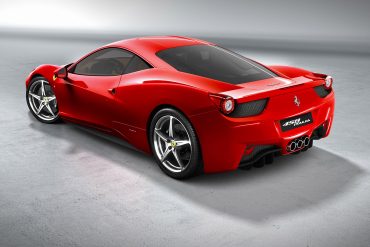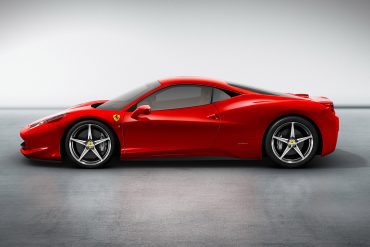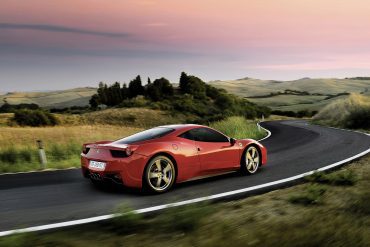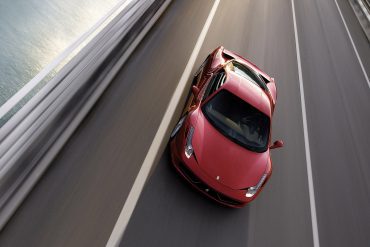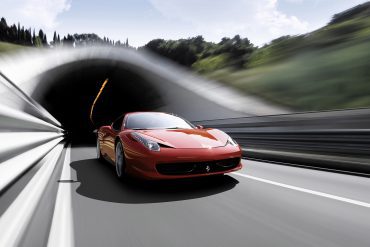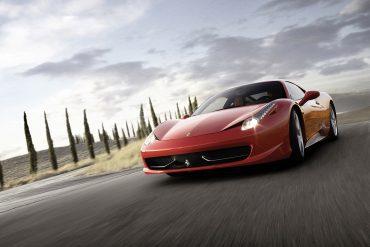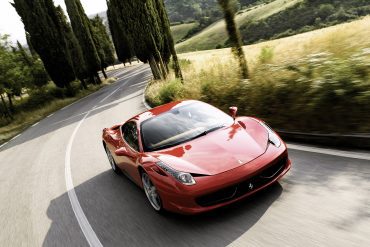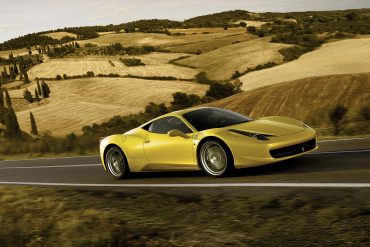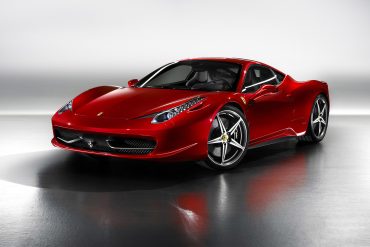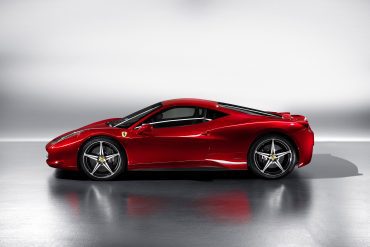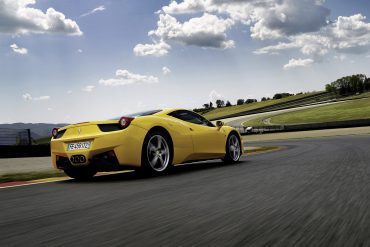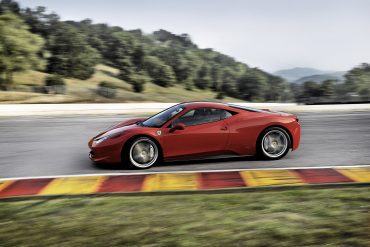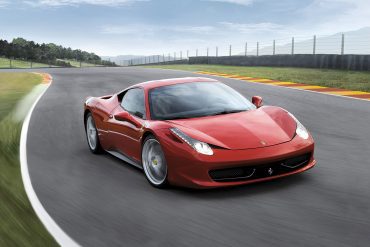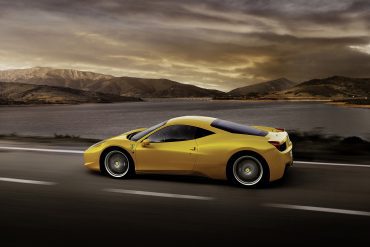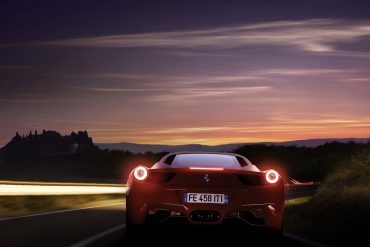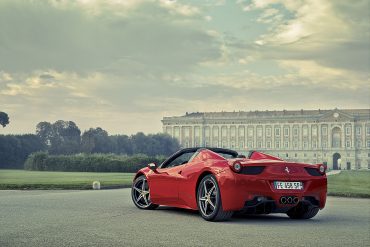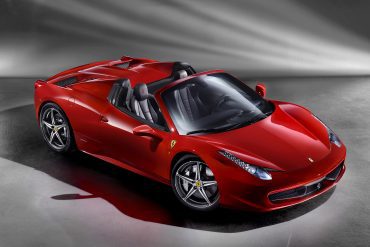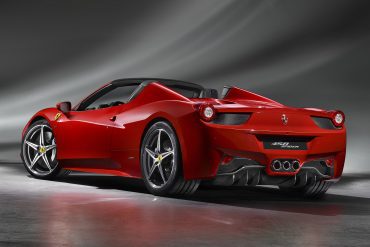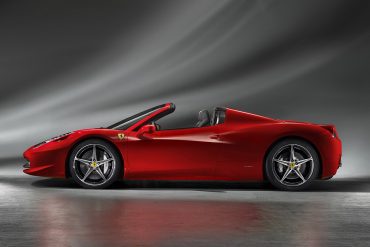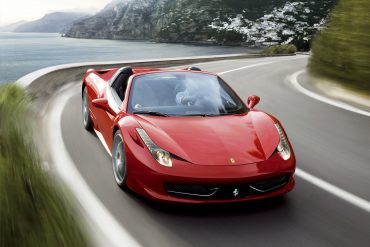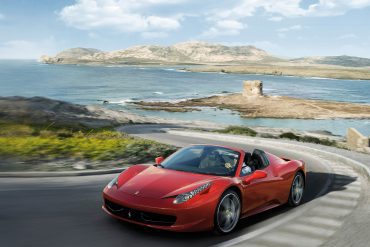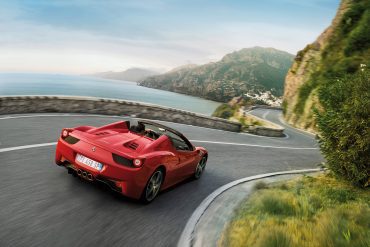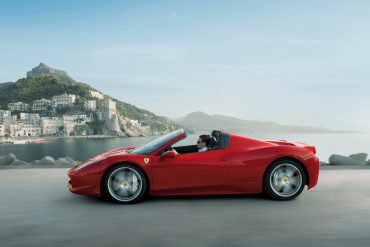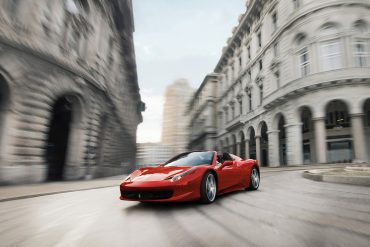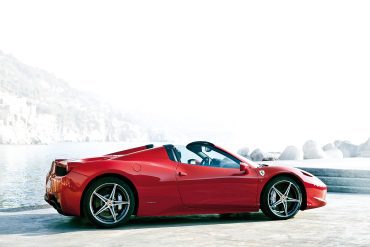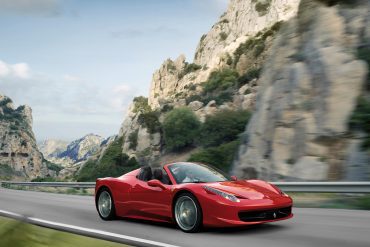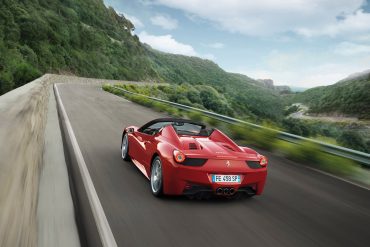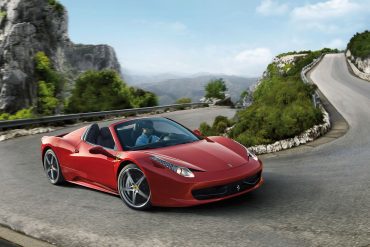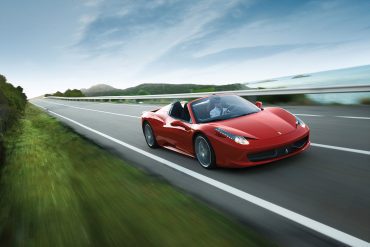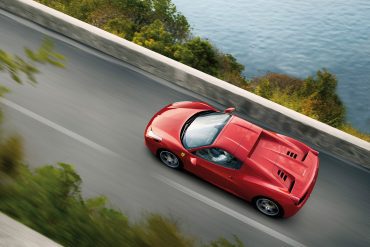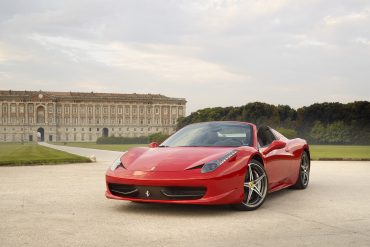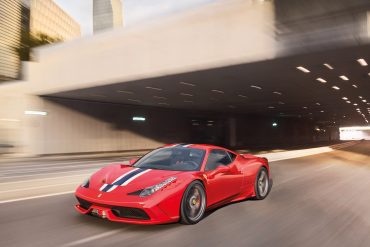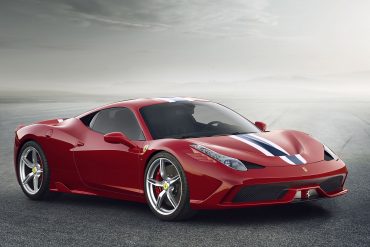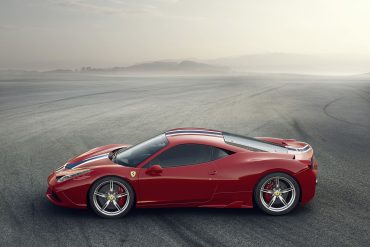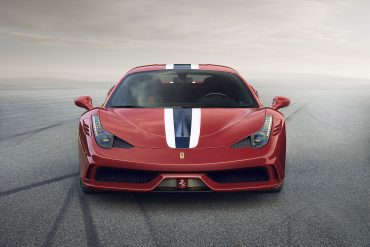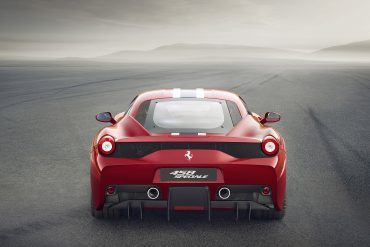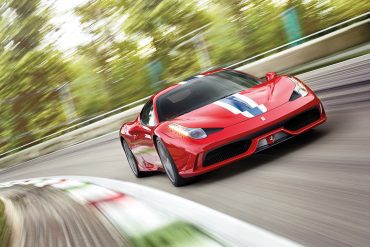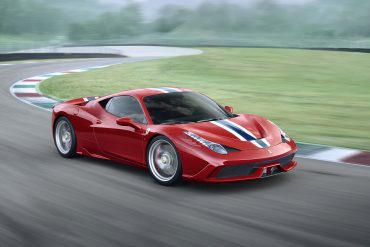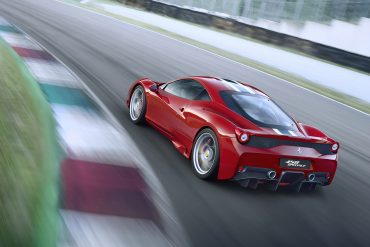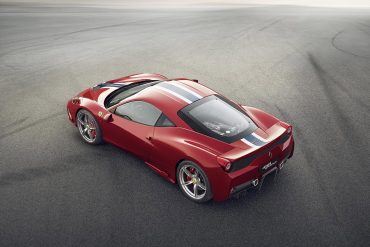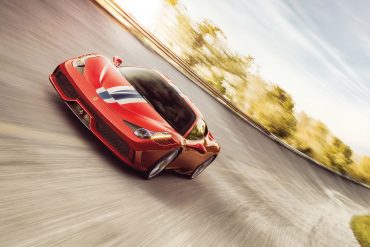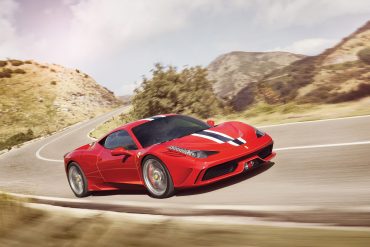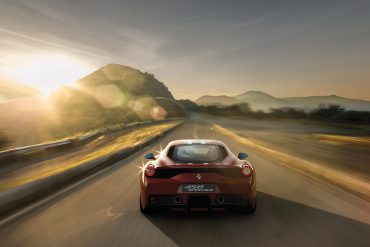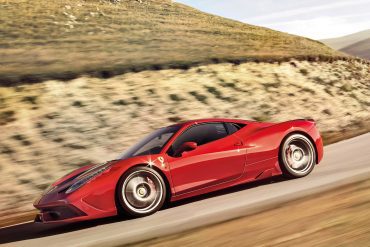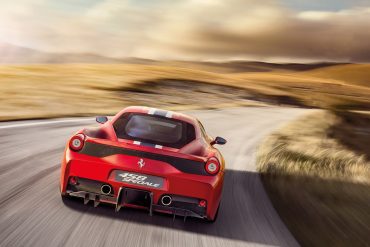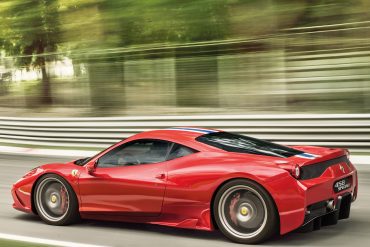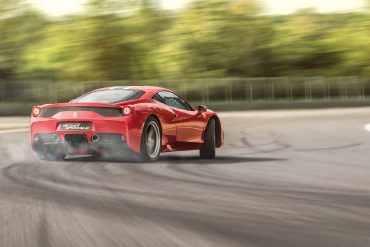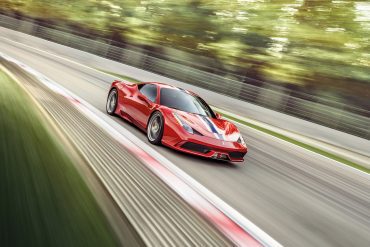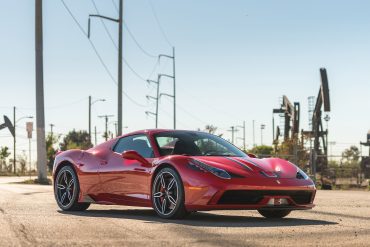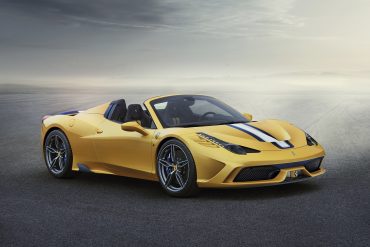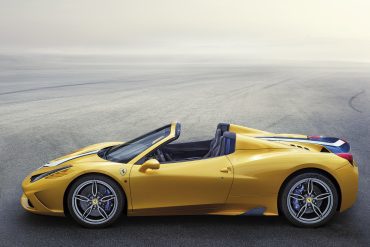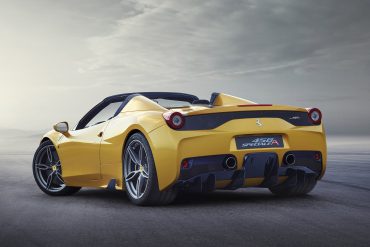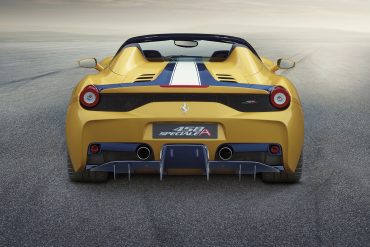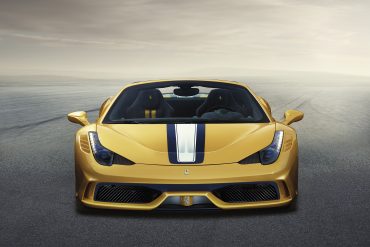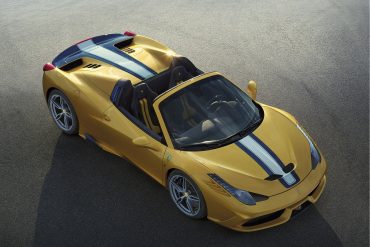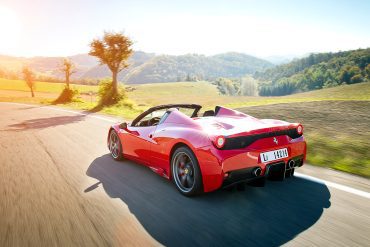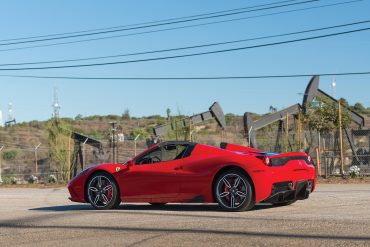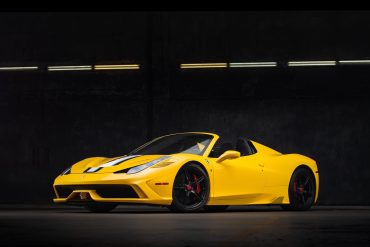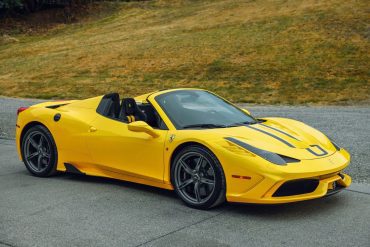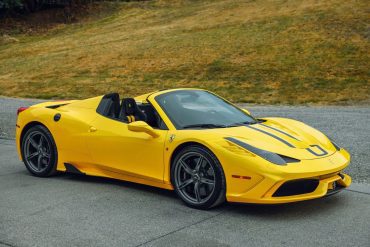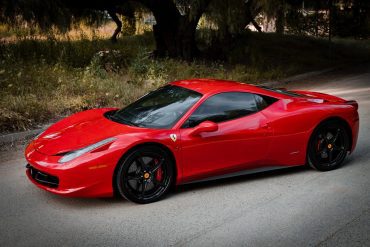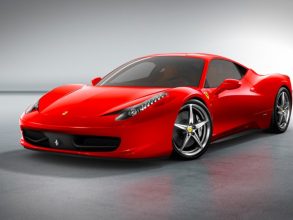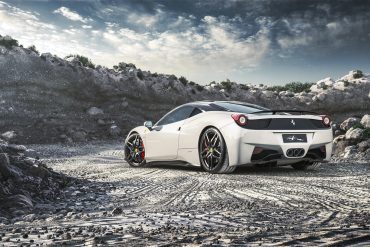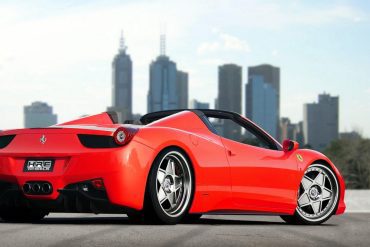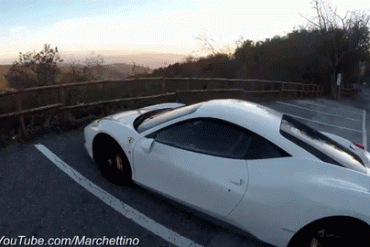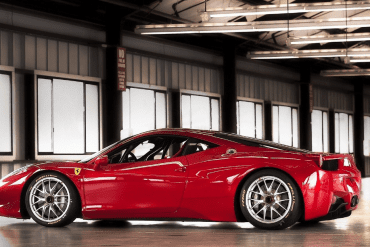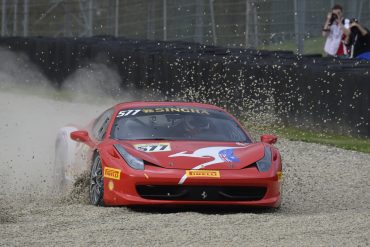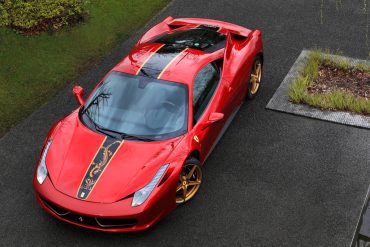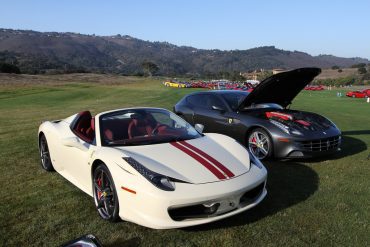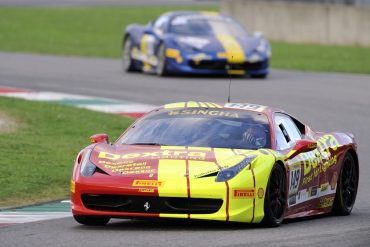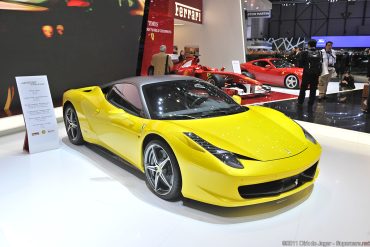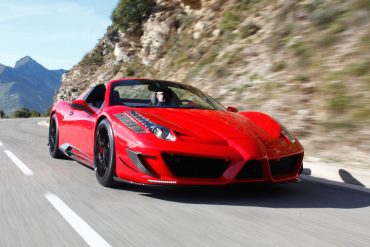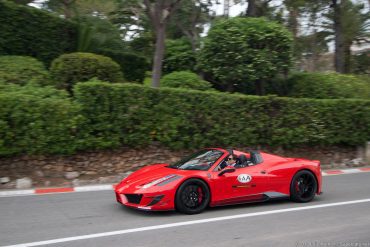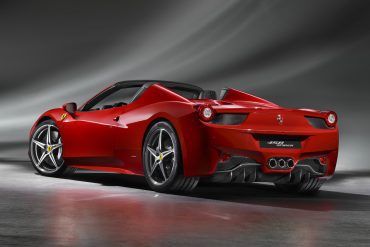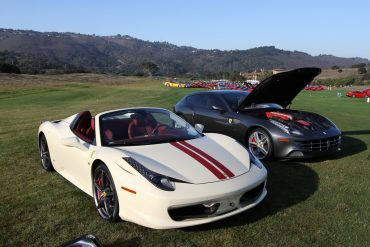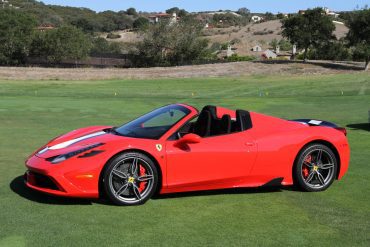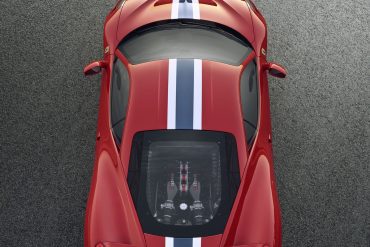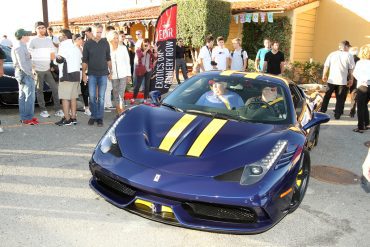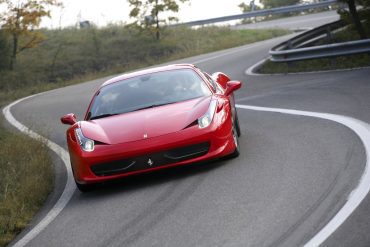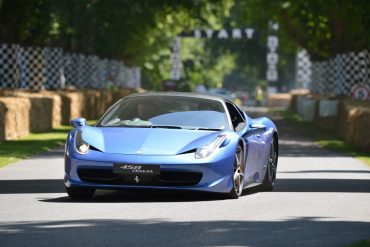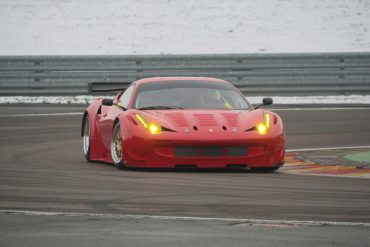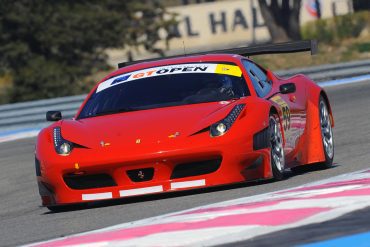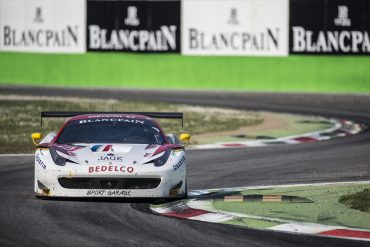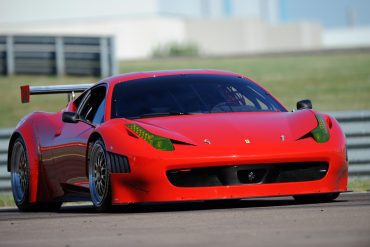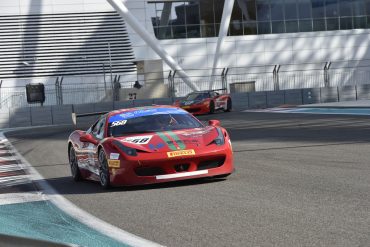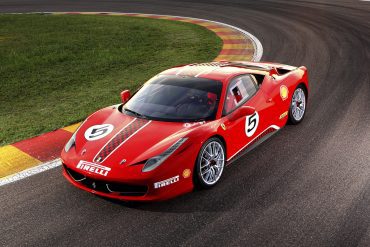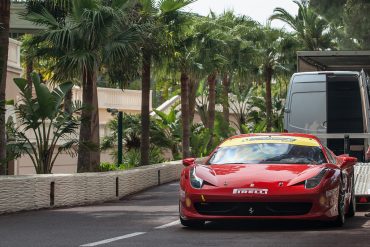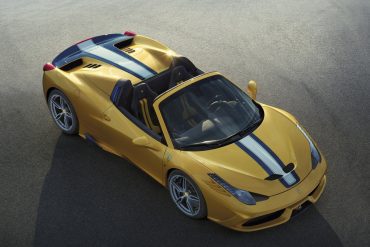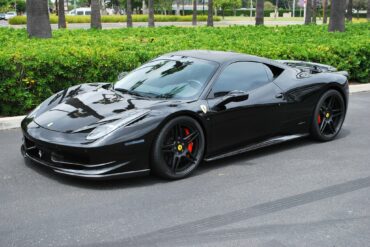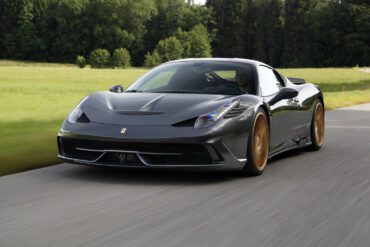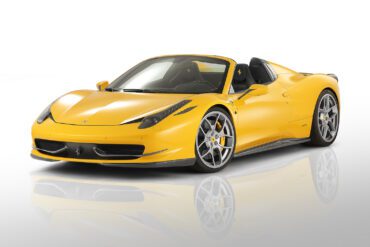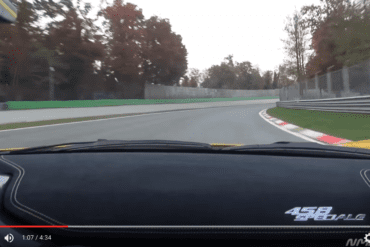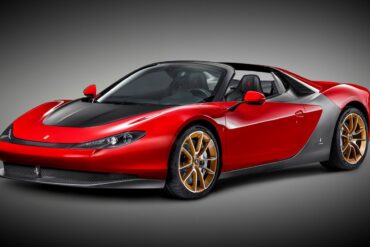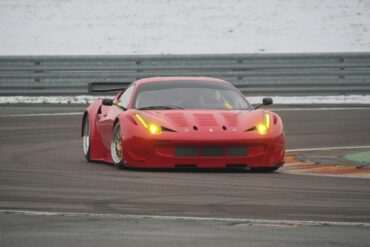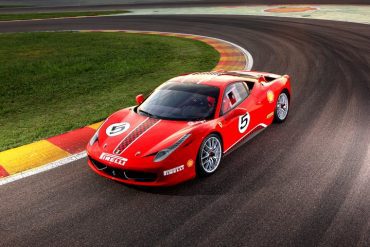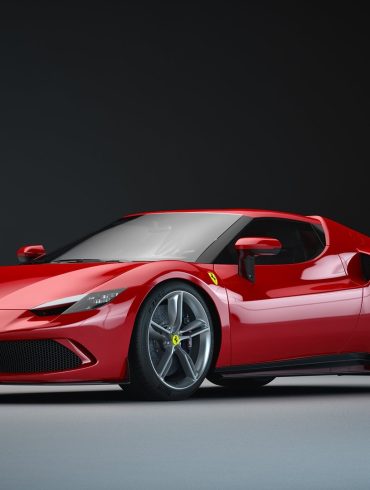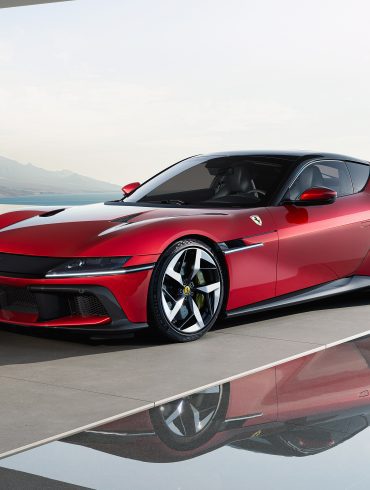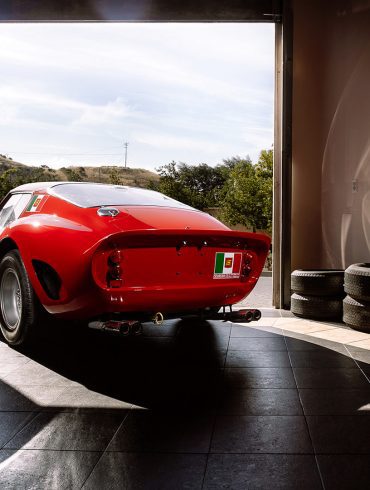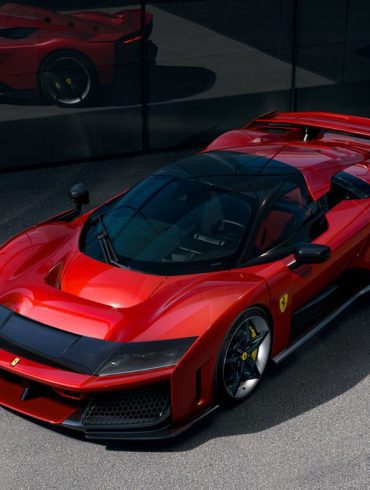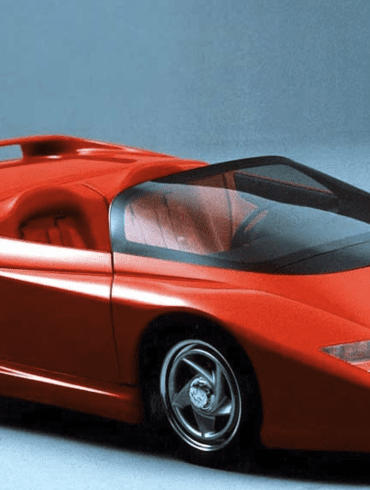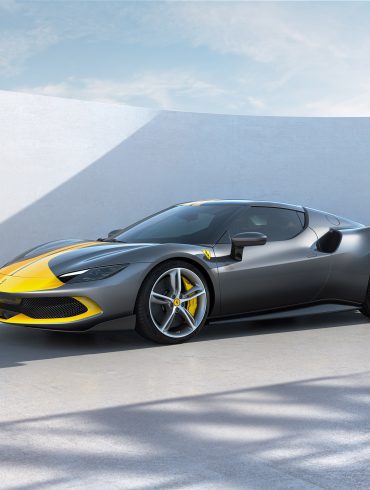2010 Ferrari 458 Challenge Maranello, July 14th 2010 – The 458 Challenge has made its world premiere debut in Maranello during the Annual Dealer Meeting, a traditional event that brings together the representatives of Ferrari’s international sales network. The new berlinetta, which will flank the F430 Challenge in the Ferrari...
Ferrari 458
The Ultimate Guide
The Ferrari 458 is an icon among modern Ferraris that captures the essence of Italian design, performance, and cutting-edge technology. Launched in 2009, the Ferrari 458 stands as a benchmark in the automotive world, blending elegance with raw power, advanced engineering, and track-ready capability. In this comprehensive guide, we’ll dive deep into everything you need to know about the Ferrari 458, covering its rich history, technical specifications, and the evolution through its various sought-after models like the Italia, Spider, and Speciale.
Overview / Variants / Models In-Depth / Buyer's Guide / Videos / Images / More Updates
Ferrari 458: The Last Naturally Aspirated Icon of Modern Supercars
The Ferrari 458, introduced in 2009 and produced until 2015, represents a defining moment in Ferrari’s history as one of the last naturally aspirated V8 models from the iconic Italian marque. The successor to the Ferrari F430, the 458 combined technological innovation with exquisite design, creating a car that was both thrilling to drive and visually captivating.
Over its production run, the 458 spawned several variants, including the Italia, Spider, and track-focused Speciale, each with unique attributes that appealed to enthusiasts and collectors alike. This article explores the history, variants, performance, and legacy of the Ferrari 458, along with insights from automotive critics who heralded it as one of the greatest modern Ferraris.
The Birth of a Modern Icon
Ferrari introduced the 458 as the successor to the F430, aiming to push the boundaries of what a road-going supercar could achieve. Designed by Pininfarina with aerodynamic insights from Ferrari’s racing department, the 458 was built to blend raw power, refined handling, and sleek aesthetics in one breathtaking package.
The car’s design incorporated advanced aerodynamics, with features like deformable winglets on the front bumper that adjusted at speed to reduce drag. The rear diffuser, coupled with a flat underbody, contributed to improved stability and downforce at high speeds. The focus on aerodynamics and styling culminated in a car that looked fast even when standing still.
In addition to its design, Ferrari incorporated lessons from Formula 1, including technology like the dual-clutch transmission and the “manettino” dial, which allowed drivers to adjust handling dynamics directly from the steering wheel. The 458’s 4.5-liter V8 engine was another highlight, capable of reaching 9,000 rpm, making it one of the highest-revving and most powerful naturally aspirated V8 engines Ferrari had ever produced.
Pininfarina’s Masterstroke
Pininfarina’s design for the Ferrari 458 is widely regarded as one of the brand’s most beautiful. The car’s flowing lines and sculpted bodywork represent an ideal balance between aesthetics and function, resulting in a sleek, aerodynamic silhouette that still looks contemporary more than a decade after its release.
Aerodynamic Front Winglets: The 458 featured small front winglets that deformed at high speeds to reduce drag, enhancing both performance and fuel efficiency.
Side Profile and Rear Diffuser: The 458’s side air intakes channeled air to the engine, while the large rear diffuser worked with a flat underbody to create significant downforce. The triple-exit exhaust, a signature element of the 458, contributed to its aggressive and unique look.
Interior: Inside, the 458’s cockpit was designed with a focus on the driver. The steering wheel integrated controls inspired by Ferrari’s Formula 1 cars, with features like the “manettino” switch, turn signal buttons, and start button within easy reach.
Car and Driver praised the 458’s aesthetics, noting that it “captures attention like few cars can, with a design that seamlessly marries beauty and performance.” The 458’s timeless design has only grown more appreciated with age, cementing it as one of Ferrari’s most admired models.
Italia, Spider, and Speciale
The Ferrari 458 lineup included three main variants, each catering to different driving experiences:
Ferrari 458 Italia: The original coupe version, the Italia set the standard for performance and handling. It was praised for its precision and responsiveness, delivering a perfect balance between track-ready performance and on-road usability.
Ferrari 458 Spider: Introduced in 2011, the Spider offered an open-top driving experience without compromising structural rigidity, thanks to Ferrari’s innovative retractable hardtop. The Spider provided the same exhilarating performance as the Italia, with the added pleasure of hearing the V8’s exhaust note unobstructed.
Ferrari 458 Speciale: Launched in 2013, the Speciale was a track-focused version of the Italia. It featured a lightweight design, improved aerodynamics, and a power increase to 597 horsepower. The Speciale included enhancements like Side Slip Angle Control (SSC) for improved handling and stability. Reviewers hailed it as one of Ferrari’s most engaging cars, and today, the Speciale is highly sought after by collectors.
Each variant of the 458 catered to a unique segment of Ferrari enthusiasts, from those who wanted a refined road car to those who craved an adrenaline-pumping, track-focused experience.
A High-Revving V8 Masterpiece
The heart of the Ferrari 458 is its naturally aspirated 4.5-liter V8 engine, which produces 562 horsepower at 9,000 rpm and 398 lb-ft of torque at 6,000 rpm. This engine is renowned not only for its power but also for its intoxicating sound, a high-pitched wail that has become a signature element of Ferrari’s V8 lineup.
Acceleration and Speed: The 458 Italia can accelerate from 0 to 60 mph in around 3.3 seconds and has a top speed of 202 mph, making it one of the fastest Ferraris at the time.
Handling and Driving Dynamics: Equipped with a 7-speed dual-clutch transmission, the 458 delivers lightning-fast shifts without interrupting power delivery. The manettino switch allows drivers to adjust settings for different driving modes, including Sport, Race, and Traction Off, tailoring the car’s dynamics to the driver’s preferences.
458 Speciale Enhancements: The Speciale’s upgrades shaved 200 pounds off the Italia’s curb weight and increased horsepower, allowing it to reach 60 mph in 3 seconds flat. With track-focused aerodynamics, a stiffer suspension, and sharper steering, the Speciale is considered one of the finest handling Ferraris.
Motor Trend reviewed the 458 and described it as “a revelation,” stating, “The 458 Italia’s speed, precision, and control are so finely honed that it almost defies belief.” The magazine’s praise reflected the enthusiasm of reviewers worldwide, who consistently rated the 458 as one of the best-driving supercars available.
Critical Acclaim
Upon its release, the Ferrari 458 received widespread acclaim from automotive critics and enthusiasts alike. Its combination of design, technology, and raw performance set it apart from its competitors and solidified its place as a modern classic.
Top Gear host Jeremy Clarkson famously declared the 458 to be “the best car in the world,” praising its handling, responsiveness, and emotional appeal. Clarkson’s endorsement reflected the general consensus, as reviewers across the board hailed the 458 as a Ferrari masterpiece.
Evo Magazine was similarly effusive, noting that “the 458 Italia feels every bit as special as Ferrari’s big V12 supercars, but with an intimacy that the bigger cars lack.” The magazine praised the 458’s feedback, balance, and driving enjoyment, which made it a standout even among other Ferraris.
Ferrari’s Last Naturally Aspirated V8 Legend
The Ferrari 458 has become increasingly significant over time as one of the brand’s last naturally aspirated V8 models. With Ferrari’s shift toward turbocharging in the 488 GTB and hybridization in the SF90, the 458 is cherished by purists who value the immediacy and high-revving nature of its engine.
The 458’s influence can be seen in Ferrari’s continued focus on blending aerodynamics with aesthetics, as well as its use of advanced electronic aids like the manettino switch.
The 458 Speciale, in particular, has become one of Ferrari’s most collectible models, valued for its purity, performance, and rarity. It’s regarded as a high point in Ferrari’s modern lineup and as a pinnacle of the brand’s engineering prowess.
Massive Desirability and Future Investment Potential
The Ferrari 458 is not only celebrated for its performance but is also considered a strong investment in the collectible car market:
Naturally Aspirated Appeal: As Ferrari’s last naturally aspirated V8, the 458 holds a special place in the brand’s history. The immediacy of throttle response and the exhilarating sound are unmatched by the turbocharged models that followed.
Steady Appreciation: Prices for well-maintained 458s have been appreciating steadily, particularly for low-mileage examples and unique variants like the 458 Speciale.
458 Speciale as a Collector’s Item: The Speciale’s limited production, track-focused enhancements, and reputation as one of Ferrari’s finest V8s make it highly collectible. It commands a premium over the Italia and Spider and is likely to continue appreciating in value.
The Ferrari 458’s Enduring Legacy
The Ferrari 458 has earned its place as one of the brand’s most iconic models, blending innovative technology with Ferrari’s traditional values of design and performance. Its naturally aspirated V8, timeless design, and exceptional handling make it a favorite among enthusiasts and collectors alike. With accolades from critics and drivers worldwide, the 458 remains a benchmark in the supercar world and a testament to Ferrari’s commitment to creating cars that are as exhilarating to drive as they are beautiful to behold.
As Ferrari continues to embrace new technology, including turbocharging and hybridization, the 458 stands as a bridge between Ferrari’s past and future. Its legacy as one of the brand’s last naturally aspirated V8s will ensure its place in the hearts of Ferrari enthusiasts and in the history of automotive excellence.
Ferrari 458 Specs
Manufacturer: Ferrari
Production: 2009–2015
Assembly: Maranello, Italy
Designer: Donato Coco
Body style: 2-door berlinetta, 2-door convertible
Layout: Rear mid-engine, RWD
Engine: 4.5 L Ferrari F136 F V8
Power: 458 Italia & Spider: 562 hp, 458 Speciale, A: 597 hp
Transmission: 7-speed dual-clutch auto
Wheelbase: 2,650 mm (104.3 in)
Length: 4,527 mm (178.2 in)
Width: 1,937 mm (76.3 in)
Height: 1,213 mm (47.8 in)
Curb weight: 1,565 kg (3,450 lb)
Predecessor: Ferrari F430
Successor: Ferrari 488
Did You Know?
Believe it or not, the 458's design was partially inspired by the way light reflected off buildings after the 1989 Loma Prieta earthquake in California. Frank Stephenson, the designer, saw beauty in the fragmented reflections and incorporated that into the car's lines.
The 458 was packed with cutting-edge technology, including a sophisticated traction control system (F1-Trac), a dual-clutch gearbox, and advanced aerodynamics that channeled air for both downforce and cooling.
Ferrari 458 Variants
Fasten your seatbelts and prepare for a thrilling ride through the world of the Ferrari 458! This is your ultimate guide to every exhilarating variant, from the seductive curves of the Italia coupe and the wind-in-your-hair freedom of the Spider, to the track-focused fury of the Speciale and the racing pedigree of the 458 Challenge, GT2, and GT3. Get ready to explore the full spectrum of this iconic Ferrari's evolution.
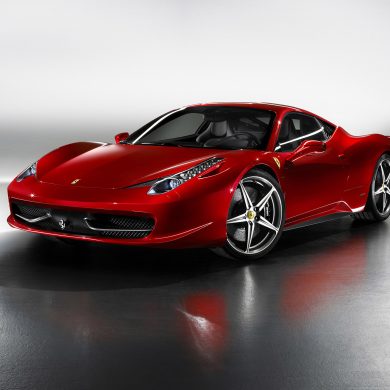
Ferrari 458 Italia
Type: Production Car
Years: 2010 - 2015
Production: N/A
Engine: 4.5 L Nat Asp V8
Power: 562 hp @ 9000 rpm
Torque: 394 lb/ft @ 6000 rpm
0-60 mph: 3.3 seconds
Top Speed: 202 mph
Whether it be its sleek and timeless Pininfarina design, or its epic 562 hp naturally-aspirated V8 engine with a 9,000 rpm redline; the 458 was destined for greatness the moment the first car drove off the production line. It has already become a modern classic. The 458 boasted a completely redesigned platform and brand new Pininfarina design. Its name is derived from its showcase 4.5L 8-cylinder engine, which made it “the highest-revving street-legal production V8”. Learn more.
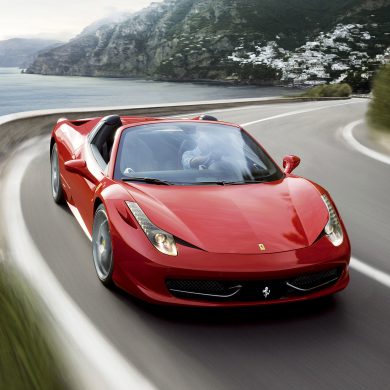
Ferrari 458 Spider
Type: Production Car
Years: 2011 - 2015
Production: N/A
Engine: 4.5 L Nat Asp V8
Power: 562 hp @ 9000 rpm
Torque: 398 lb/ft @ 6000 rpm
0-60 mph: 3.3 seconds
Top Speed: 202 mph
The 458 Spider is powered by Ferrari’s naturally-aspirated, direct-injection 4.5 litre V8 which was nominated as the 2011 International Engine of the Year for its engineering excellence in terms of drivability, performance, economy and refinement. Power is transferred to the road by Ferrari’s class-leading dual-clutch F1 paddle-shift transmission through the E-Diff, itself integrated with the F1-Trac traction control. The top is an electronically retractable hardtop. Learn more.
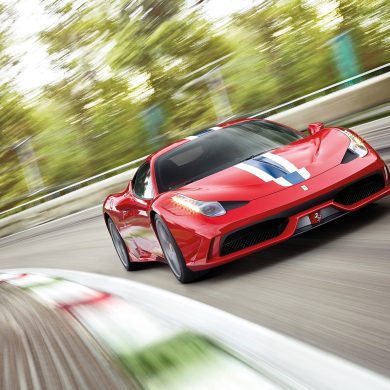
Ferrari 458 Speciale
Type: Special Edition
Years: 2013 - 2015
Production: ~3,000 units
Engine: 4.5 L Nat Asp V8
Power: 597 bhp @ 9000 rpm
Torque: 398 lb/ft @ 6000 rpm
0-60 mph: 3.0 seconds
Top Speed: 202 mph
This is absolutely our favorite car ever. Period, full stop, the end. It took the already epic “entry level” 458 and with the Speciale, Ferrari amped everything up to 11. It is arguably the best naturally aspirated sports car in history. It was the last naturally-aspirated V8 Ferrari and the engine was at its peak in terms of evolution. Mid-engined 4.5-litre V8 with flat-plane-crank, sky high 9,000 RPM redline, insane 597 bhp and 398 lb/ft of torque, making this the most powerful naturally aspirated V8 ever built. Learn more.
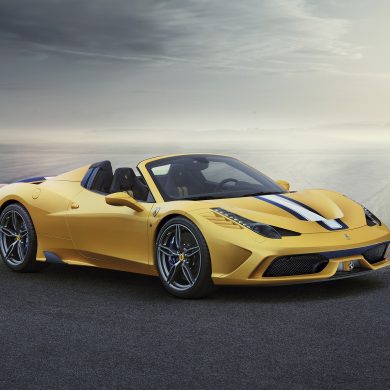
Ferrari 458 Speciale A
Type: Special Edition
Years: 2014 - 2015
Production: 499 units
Engine: 4.5 L Nat Asp V8
Power: 597 bhp @ 9000 rpm
Torque: 398 lb/ft @ 6000 rpm
0-60 mph: 3.0 seconds
Top Speed: 202 mph
The Speciale A followed the 16M’s exclusivity formula with just 499 units made. Unlike the 16M which had a fabric roof, Ferrari decided the Speciale A should have the same folding hard-top as the regular 458 Spider. At 1445kg the numbers were worrying for hard core fans. To offset its weight, Ferrari added the same powerplant as the Speciale. Learn more.
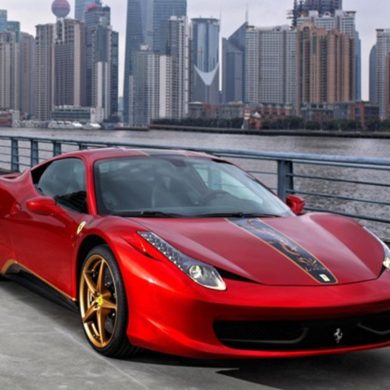
Ferrari 458 Italia China Edition
Type: Special Edition
Years: 2012
Production: 20 units
Engine: 4.5 L Nat Asp V8
Power: 562 hp @ 9000 rpm
Torque: 398 lb/ft @ 6000 rpm
0-60 mph: 3.3 seconds
Top Speed: 202 mph
This special edition marked the 20th anniversary for Ferrari in China since the first Ferrari, a 348 TS, was ordered in Beijing. This 458 Italia special edition of only 20 cars was dedicated exclusively to the China market. The car’s livery is characterized by unique Chinese elements and is finished in a brand new colour called Marco Polo Red specially developed for this exclusive car. Learn more.
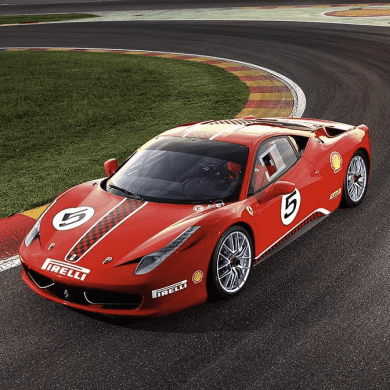
Ferrari 458 Challenge / Challenge Evo
Type: Race Car
Years: 2011-2013 / 2014 - 2016 (Evo)
Production: ~150 units
Engine: 4.5 L Nat Asp V8
Power: 562 hp @ 9000 rpm
Torque: 398 lb/ft @ 6000 rpm
0-60 mph: 3.3 seconds
Top Speed: 202 mph
The 458 Challenge was designed to participate in the Ferrari Challenge. The 458 Challenge Evo was introduced for the 2014 season and was replaced by the 488 Challenge for the 2017 season. Hence both variants of the 458 Challenge were used as the prime Challenge car for three seasons, the 458 Challenge for 2011 to 2013, the Evo for 2014 to 2016. Learn More / Learn More Evo

Ferrari 458 Italia GT2
Type: Race Car
Years: 2011 - 2015
Production: N/A
Engine: 4.5 L Nat Asp V8
Power: 460 hp @ 6,250 rpm
Torque: 384 ft lbs @ 5,750 rpm
0-60 mph: N/A
Top Speed: N/A
Michelotto was once again called in to turn Ferrari's latest road car into a top GT2/GTE contender. The car won the 2012 and 2014 24 Hours of Le Mans, the 2012 12 Hours of Sebring and two editions of the Petit Le Mans, the first in 2011 and the second in 2012. It had great success all the way through 2015 and the car was replaced for the 2016 season by the Ferrari 488 GTE.

Ferrari 458 Italia GT3
Type: Race Car
Years: 2006 - 2010
Production: N/A
Engine: 4.5 L Nat Asp V8
Power: 550 hp
Torque: 406 ft lbs
0-60 mph: N/A
Top Speed: N/A
The GT3 version of the Ferrari 458 Italia was built as well by Michelotto. The car is slightly lighter and more powerful than the GTE version. It was super competitive, holding the record for the number of titles won in many international Championships. The list of victories is endless and even in 2015, in the last year of competition and before its successor was introduced, it was still one of the best.
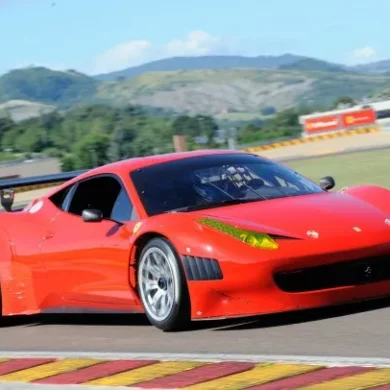
Ferrari 458 Italia Grand-Am
Type: Race Car
Years: 2007
Production: N/A
Engine: 4.5 L Nat Asp V8
Power: 500 hp
Torque: N/A
0-60 mph: N/A
Top Speed: N/A
In 2012, Ferrari developed a modified version of the 458 GT3 for Grand-Am. The car weighs the same but produces less downforce than the GT3 car; the engine is also restricted more heavily, generating a power output of 507 PS (373 kW; 500 hp) and having an 8,000 rpm redline. Instead of a dual-clutch automatic transmission, the car is fitted with a conventional sequential manual transmission
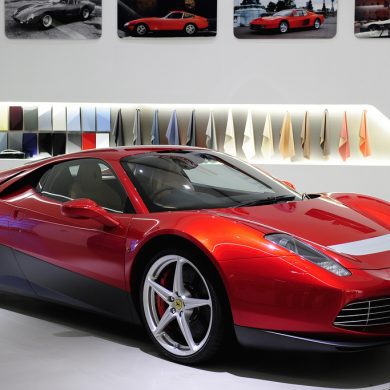
Ferrari SP12 EC
Type: One-Off Special
Years: 2012
Production: 1 unit
Engine: 4.5 L Nat Asp V8
Power: 597 bhp @ 9000 rpm
Torque: 398 lb/ft @ 6000 rpm
0-60 mph: 3.0 seconds
Top Speed: 202 mph
The Ferrari SP12 EC is a one-off sports car built by Ferrari for English musician Eric Clapton under Ferrari's Special Projects program, and based on the 458 Italia. It was revealed in May 2012. The bespoke SP12 EC's bodywork is inspired by that of the Ferrari 512 BB, and was designed by Ferrari Styling Centre in collaboration with Pininfarina. Mechanically it isthe same as the 458. Learn more.
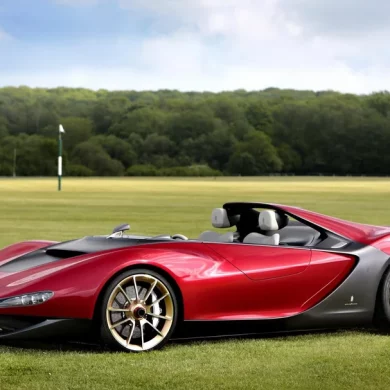
Pininfarina Sergio
Type: Coachbuilt Special
Years: 2015
Production: 6 units
Engine: 4.5 L Nat Asp V8
Power: 597 bhp @ 9000 rpm
Torque: 398 lb/ft @ 6000 rpm
0-60 mph: 3.0 seconds
Top Speed: 202 mph
Designed by Pininfarina, just six of this incredibly limited edition roadster are being built. The car was created to celebrate the spirit and core values of the historic Cambiano company in the 60th anniversary year of its collaboration with the Prancing Horse. Its a homage to Sergio Pininfarina, who sealed the unique, longstanding partnership with Ferrari. Learn more.
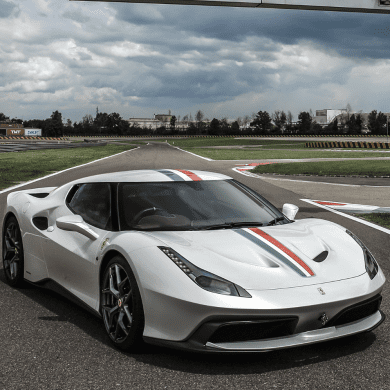
Ferrari 458 MM Speciale
Type: One-Off Special
Years: 2016
Production: 1 units
Engine: 4.5 L Nat Asp V8
Power: 597 bhp @ 9000 rpm
Torque: 398 lb/ft @ 6000 rpm
0-60 mph: 3.0 seconds
Top Speed: 202 mph
The 458 Speciale MM is a one-off sports car based on a Ferrari 458 Speciale and built for a British customer. The design pays homage to the Ferrari 288 GTO. Finished in Bianco Italia and complete with a livery that pays homage to the Italian flag, this unique coupé features all-new bodywork, handcrafted in aluminium with composite carbon-fibre bumpers front and rear.
"The 458 Italia is a masterpiece. It's the most complete and accomplished Ferrari ever made."
EVO Magazine (at the time of launch)
Ferrari 458 Buyer's Guide
Buying Tips & Things to Look for When Buying A Ferrari 458 or 458 Speciale
Here’s a buyer’s guide for the Ferrari 458 and Ferrari 458 Speciale, covering essential considerations, potential maintenance issues, and insights on its desirability and investment potential. The Ferrari 458, produced from 2009 to 2015, remains one of the most iconic Ferraris of the modern era. It introduced innovations that set new standards for performance and handling, all packaged in a stunning design. Below is a guide to help you navigate what to look for when considering a Ferrari 458, common issues, and investment insights.
1. Engine and Transmission Health
The 458’s naturally aspirated 4.5-liter V8 engine, delivering 562 horsepower, is a marvel of engineering. However, certain aspects of engine and transmission health are crucial to assess:
Engine Sound and Smoothness: The engine should rev smoothly to its 9,000 rpm redline with no unusual noises. Any ticking or knocking sounds could indicate internal wear or valve train issues, especially in high-mileage examples.
Transmission (Dual-Clutch System): The 458 uses a 7-speed dual-clutch transmission that’s known for its smooth, quick shifts. However, early models had occasional software issues, which were later updated by Ferrari. Test shifts in both automatic and manual modes, looking for hesitation or jerking.
Gearbox Oil Changes: Regular gearbox oil changes are essential for preserving the dual-clutch system’s lifespan. Check the service records to confirm frequent oil and fluid changes, as neglecting these can lead to costly repairs.
2. Suspension and Handling Components
The Ferrari 458’s suspension system provides incredible handling but requires regular maintenance to maintain performance:
Suspension Bushings and Ball Joints: Worn suspension bushings and ball joints are common in higher-mileage cars. Listen for any clunking sounds during test drives, which could indicate that these parts need replacement.
MagneRide Dampers: The 458 features Ferrari’s MagneRide dampers, which improve handling and ride quality. Dampers should operate smoothly without leaks; replacements can be costly, so look for recent maintenance documentation.
Alignment and Tire Wear: Due to the 458’s performance nature, tire wear and alignment are crucial. Uneven wear may indicate alignment issues or aggressive driving habits, which could impact suspension components over time.
3. Braking System
The Ferrari 458 is equipped with carbon-ceramic brakes as standard, providing powerful stopping power but requiring careful inspection:
Brake Disc and Pad Wear: Carbon-ceramic brakes are durable but expensive to replace. Inspect the discs for any cracking, excessive wear, or discoloration. Worn pads should be replaced with Ferrari-approved components.
Brake Fluid Changes: Regular brake fluid changes are essential, as old fluid can compromise braking performance. Confirm that brake fluid has been replaced at recommended intervals.
4. Bodywork and Paint Condition
The Ferrari 458’s bodywork, crafted with a blend of aluminum and composite materials, should be thoroughly inspected:
Panel Alignment: Check for even panel gaps, which indicate whether the car has been in any accidents or undergone repairs. Misaligned panels can signal past damage.
Paint and Clear Coat: Ferrari’s signature paint is durable, but look for signs of repainting or touch-ups, particularly on high-wear areas like the front bumper and fenders.
Underbody Scrapes: Given the car’s low ride height, it’s common to find scrapes on the front bumper or underbody. Minor wear is expected, but excessive scraping may require additional inspection.
5. Cooling System and Radiators
The 458’s cooling system is essential to prevent overheating, especially during spirited driving:
Radiators and Coolant Levels: The front-mounted radiators are vulnerable to road debris. Check for any coolant leaks, damage, or buildup of debris, which can obstruct airflow and impact cooling efficiency.
Coolant Flushes: Regular coolant flushes prevent corrosion within the cooling system. Confirm that the car’s coolant has been replaced according to Ferrari’s recommended service intervals.
6. Electrical Systems and Interior Condition
The Ferrari 458’s interior electronics should function without issue, as repairs can be labor-intensive and costly:
Infotainment and Instrument Cluster: Ensure that the infotainment system, climate controls, and instrument cluster display operate as intended. Check for any intermittent issues or warning lights.
Sticky Interior Plastics: Like many Ferraris of this era, the 458’s interior plastics can become “sticky” over time due to heat exposure. While cosmetic, this issue may detract from the car’s appearance.
Battery Condition: Many Ferrari 458s are driven infrequently, leading to potential battery drain. Using a Ferrari-supplied trickle charger can help maintain battery life.
7. Desirability and Investment Potential
The Ferrari 458 is highly regarded for its naturally aspirated V8 engine, stunning design, and performance:
Manual-Free Era: As one of Ferrari’s last naturally aspirated V8 models, the 458 holds a unique place in Ferrari’s history. This feature, along with its analog-like driving experience, makes the 458 desirable among collectors.
Steady Appreciation: Prices for well-maintained 458s have been appreciating steadily, particularly for low-mileage examples. Clean, original cars with complete service records are likely to see continued interest in the collector market.
Spider Variant: The 458 Spider, with its retractable hardtop, is particularly desirable, offering open-air driving without sacrificing performance. As a future classic, the Spider variant is likely to remain highly valued.
458 Speciale Buyer’s Guide
The Ferrari 458 Speciale is the pinnacle of the 458 lineup, offering enhanced performance, reduced weight, and an even more exhilarating driving experience. Produced from 2013 to 2015, the Speciale is lighter, faster, and comes with unique design elements that distinguish it from the standard 458.
1. Enhanced Engine and Performance Components
The 458 Speciale’s 4.5-liter V8 produces 597 horsepower, making it one of Ferrari’s most powerful naturally aspirated engines:
Engine Condition: The Speciale’s engine is designed for track use, so ensure it has been properly maintained. Look for any signs of wear or performance issues, especially if the car has been frequently tracked.
Transmission Tuning: The F1 transmission in the Speciale has been tuned for faster shifts. During test drives, confirm that shifts are quick, precise, and smooth across all modes.
2. Suspension and Chassis Setup
The Speciale’s suspension and chassis setup make it more track-oriented than the standard 458:
Stiffer Suspension: The Speciale features a stiffer suspension setup, which enhances handling but may lead to quicker wear on components like bushings and shocks. Inspect these parts, especially if the car has seen track time.
Aerodynamic Elements: The Speciale includes unique aero components, such as front and rear active aerodynamic flaps. These should be in good condition, as damage or malfunctions can impact high-speed stability.
3. Braking System
The Speciale is equipped with upgraded carbon-ceramic brakes for enhanced stopping power:
Brake Pad and Disc Condition: Check the brake discs and pads for signs of wear or cracking, especially if the car has been used extensively on track. Carbon-ceramic brakes are durable but expensive to replace.
Brake Fluid Changes: Regular brake fluid changes are essential to maintain braking performance. Verify that the brake fluid has been replaced according to Ferrari’s schedule.
4. Interior and Exterior Condition
The Speciale’s interior is designed with a minimalist, track-focused approach:
Interior Trim: Alcantara and carbon fiber trim dominate the Speciale’s interior. Ensure that the trim is in good condition, as restoring Alcantara or replacing carbon fiber can be costly.
Speciale Graphics and Badging: The Speciale features unique graphics, badges, and details that add to its desirability. Verify the originality of these elements, as they can affect resale value.
5. Desirability and Investment Potential for the 458 Speciale
The Ferrari 458 Speciale has become highly collectible due to its exclusivity, performance, and status as one of Ferrari’s last naturally aspirated track-focused models:
Exclusivity and Performance: As a limited-production model, the Speciale is rare and highly sought after by collectors. Its performance enhancements, track-ready setup, and unique styling make it a prime choice for enthusiasts.
Strong Appreciation: The 458 Speciale has consistently appreciated in value, particularly for low-mileage, well-maintained examples. As Ferrari’s last naturally aspirated V8 special edition, it holds a special place in Ferrari’s modern lineup.
Future Classic Status: Given its rarity and performance, the Speciale is considered a modern classic. Its value is expected to continue appreciating, making it a solid investment for those seeking a highly collectible Ferrari.
Conclusion
The Ferrari 458, with its groundbreaking performance and timeless design, offers a compelling package for enthusiasts and collectors alike. When buying a 458, prioritize examples with full service histories, minimal modifications, and recent maintenance. The 458 Speciale, with its track-focused enhancements, is particularly prized among collectors and represents a pinnacle of Ferrari’s naturally aspirated V8 engineering. Both models hold strong investment potential and are likely
"The Speciale's engine is a masterpiece. It's even more responsive and eager to rev than the standard 458, and it produces a sound that will send shivers down your spine."
Sports Car International (at the time of launch)


